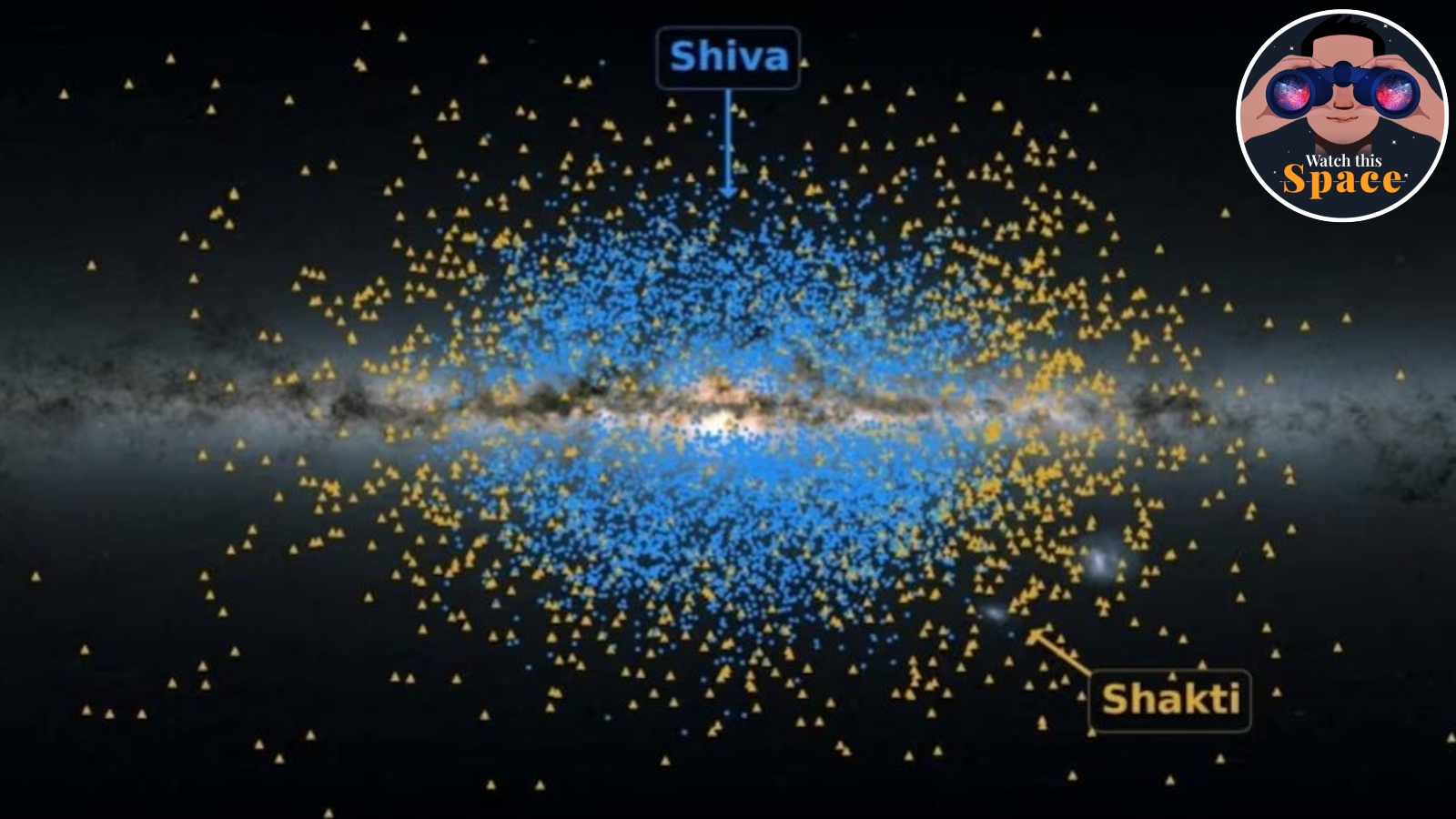The Max Planck Institute for Astronomy in Germany announced this week that astronomers have identified what may be two of the Milky Way’s earliest building blocks called Shiva and Shakti. These are potentially the remnants of two galaxies that merged between 12 and 13 billion years ago with an early version of the Milky Way, to eventually create the galaxy in which our solar system is in.
You can think of that being like historians finding the traces of an early settlement that eventually grew into a large present-day metropolis. For this. They had to comb through data of more than 6 million stars captured by the European Space Agency’s Gaia mission and the Sloan Digital Sky Survey.
When two galaxies collide and merge, many things happen at once. The stars from the two galaxies mingle along with each other. Also, each galaxy will come with its own reservoir of hydrogen gas. When they collide, clouds of this gas are destabilised, creating an environment for new stars to be born. These “accreted stars” will add to the comingled mix of stars from both galaxies.
But how do you identify which stars came from which galaxy long after the merger is complete? That would be a bit like trying to find out which hay came from which field in a mixed haystack. Unless you take one thing into consideration — even after the collision and population mergers, most of the stars retain some of the basic properties that are linked to the speed and direction of the galaxy they came from. Once you know that, it is almost basic physics from that point.
Because that means that stars from the same pre-merger galaxy will share similar values for energy and angular momentum. Angular momentum is the momentum associated with rotation. Stars moving in the same galaxy’s gravitation field will see both their energy and angular momentum conserved. They would remain the same over time. If you see large groups of stars with similar and unusual values for energy and angular momentum, there is a good chance what you are seeing is a merger remnant.

But that should undermine the sheer magnitude of the work that Khyati Malhan and Hans-Walter Rix of the Max Planck Institute undertook. Malhan and Rix used Gaia data along with detailed stellar spectra from SDSS. They found that some metal-poor stars seemed to all have specific combinations of angular momentum and energy. In contrast to what they are calling the “poor old heart” of the Milky Way, two populations of stars had similarly large angular momentum. Malhan named these two structures Shiva and Shakti, inspired by Hindu mythology.
Shiva and Shakti are easier to imagine and much more difficult to visualise but there is something that can more easily be pictured in your mind — auroras. While you are probably thinking of mesmerisingly beautiful dancing green lights above Norway, our planet is not the only one with aurorae.
The gas giants Jupiter, Saturn and Uranus all have aurorae, caused by different phenomena. Reading University in the United Kingdom announced that scientists are now looking to study aurorae on Saturn and Uranus. No joke intended.
You see, technically, auroras on all planets happen due to the same mechanism — high-energy charged particles that are funnelled down by magnetic field lines, making them collide with the planet’s atmosphere, producing light. On Earth, aurorae are caused by the “solar wind” of charged particles from the Sun while Jupiter has an internal source for these charged particles.
The mystery now lies in where the charged particles forming the aurorae on Saturn and Uranus come from. The scientists have been allotted valuable James Webb Space Telescope time to capture data so they can better answer that question.

Shambhu Kumar is a science communicator, making complex scientific topics accessible to all. His articles explore breakthroughs in various scientific disciplines, from space exploration to cutting-edge research.


